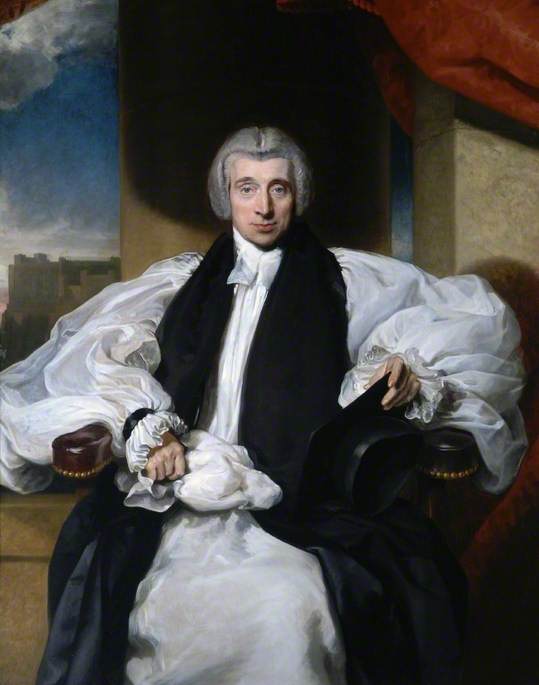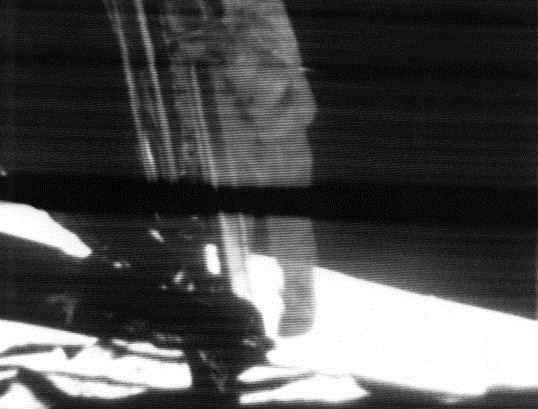|
Paula Chadwick
Mary Paula Chadwick is a British physicist who is professor and head of the Department of Physics at Durham University. Her research investigates gamma-ray astronomy and astroparticle physics. She is involved with the Cherenkov Telescope Array. Early life and education Chadwick became interested in astronomy as a child. She believes the Apollo 11 moon landing may have triggered her passion. Chadwick was an undergraduate student at Queen Mary University of London. She moved to Durham University for her doctoral research, where she studied high energy cosmic gamma rays from pulsars. Research and career Chadwick leads gamma-ray astronomy at Durham University. She is particularly interested in supernova explosions and black holes which produce high-speed jets. When gamma rays (the most energetic form of electromagnetic radiation) hit the atmosphere, they produce a cascade of high energy matter that travels faster than the speed of light in air. This produces a brief flash ... [...More Info...] [...Related Items...] OR: [Wikipedia] [Google] [Baidu] |
Durham University
, mottoeng = Her foundations are upon the holy hills ( Psalm 87:1) , established = (university status) , type = Public , academic_staff = 1,830 (2020) , administrative_staff = 2,640 (2018/19) , chancellor = Sir Thomas Allen , vice_chancellor = Karen O’Brien , city = Durham and Stockton-on-Tees , state = , country = England , campus_size = , students = () , undergrad = () , postgrad = () , free_label = Student newspaper , free = ''Palatinate'' , colours = Palatinate , endowment = £98.2 million , budget = £393.2 million , academic_affiliations = Russell Group ACU Coimbra Group EUA N8 Group Matariki Network of Universities University of the Arctic Universities UK Virgo Consortium , sporting_affiliations = BUCS, Wallace Group , sports_free_label = Sports team , sports_free = Team Durham , website = , logo = , embedded = Durham University (legally the University of Durham) is a collegiate public research ... [...More Info...] [...Related Items...] OR: [Wikipedia] [Google] [Baidu] |
Queen Mary University Of London
Queen Mary University of London (QMUL, or informally QM, and previously Queen Mary and Westfield College) is a public university, public research university in Mile End, East London, England. It is a member institution of the federal University of London. Teaching in Mile End began as a philanthropic endeavor under the auspices of the East London College in the 1880s. Renamed Queen Mary College, after Mary of Teck, the College was admitted to the University of London in 1915. In 1989 the College merged with Westfield College, a teacher training college, to form Queen Mary and Westfield College. In 1995 Queen Mary and Westfield College merged with St Bartholomew's Hospital Medical College and The Royal London Hospital, London Hospital Medical College to form the Barts and The London School of Medicine and Dentistry, School of Medicine and Dentistry (informally known as Barts). Medical students had been informally educated at St Bartholomew's since its foundation as a priory and hospi ... [...More Info...] [...Related Items...] OR: [Wikipedia] [Google] [Baidu] |
Gamma-ray Astronomy
Gamma-ray astronomy is the astronomical observation of gamma rays,Astronomical literature generally hyphenates "gamma-ray" when used as an adjective, but uses "gamma ray" without a hyphen for the noun. the most energetic form of electromagnetic radiation, with photon energies above 100 keV. Radiation below 100 keV is classified as X-rays and is the subject of X-ray astronomy. In most known cases, gamma rays from solar flares and Earth's atmosphere are generated in the MeV range, but it is now known that gamma rays in the GeV range can also be generated by solar flares. It had been believed that gamma rays in the GeV range do not originate in the Solar System. As GeV gamma rays are important in the study of extra-solar, and especially extra-galactic, astronomy, new observations may complicate some prior models and findings. The mechanisms emitting gamma rays are diverse, mostly identical with those emitting X-rays but at higher energies, including electron–posi ... [...More Info...] [...Related Items...] OR: [Wikipedia] [Google] [Baidu] |
Cherenkov Telescope Array
The Cherenkov Telescope Array or CTA is a multinational, worldwide project to build a new generation of ground-based gamma-ray instrument in the energy range extending from some tens of GeV to about 300 TeV. It is proposed as an open observatory and will consist of two arrays of Imaging Atmospheric Cherenkov telescopes (IACTs), a first array at the Northern Hemisphere with emphasis on the study of extragalactic objects at the lowest possible energies, and a second array at the Southern Hemisphere, which is to cover the full energy range and concentrate on galactic sources. The physics program of CTA goes beyond high energy astrophysics into cosmology and fundamental physics. Building on the technology of current generation ground-based gamma-ray detectors ( MAGIC, HESS, and VERITAS), CTA will be ten times more sensitive and have unprecedented accuracy in its detection of high-energy gamma rays. Current gamma-ray telescope arrays host up to five individual telescopes, but CTA ... [...More Info...] [...Related Items...] OR: [Wikipedia] [Google] [Baidu] |
Apollo 11
Apollo 11 (July 16–24, 1969) was the American spaceflight that first landed humans on the Moon. Commander Neil Armstrong and lunar module pilot Buzz Aldrin landed the Apollo Lunar Module ''Eagle'' on July 20, 1969, at 20:17 UTC, and Armstrong became the first person to step onto the Moon's surface six hours and 39 minutes later, on July 21 at 02:56 UTC. Aldrin joined him 19 minutes later, and they spent about two and a quarter hours together exploring the site they had named Tranquility Base upon landing. Armstrong and Aldrin collected of lunar material to bring back to Earth as pilot Michael Collins flew the Command Module ''Columbia'' in lunar orbit, and were on the Moon's surface for 21 hours, 36 minutes before lifting off to rejoin ''Columbia''. Apollo 11 was launched by a Saturn V rocket from Kennedy Space Center on Merritt Island, Florida, on July 16 at 13:32 UTC, and it was the fifth crewed mission of NASA's Apollo program. The Apollo spacecraft ha ... [...More Info...] [...Related Items...] OR: [Wikipedia] [Google] [Baidu] |
Moon Landing
A Moon landing is the arrival of a spacecraft on the surface of the Moon. This includes both crewed and robotic missions. The first human-made object to touch the Moon was the Soviet Union's Luna 2, on 13 September 1959. The United States' Apollo 11 was the first crewed mission to land on the Moon, on 20 July 1969. There were six crewed U.S. landings between 1969 and 1972, and numerous uncrewed landings, with no soft landings happening between 22 August 1976 and 14 December 2013. The United States is the only country to have successfully conducted crewed missions to the Moon, with the last departing the lunar surface in December 1972. All soft landings took place on the near side of the Moon until 3 January 2019, when the Chinese Chang'e 4 spacecraft made the first landing on the far side of the Moon. Uncrewed landings After the unsuccessful attempt by Luna 1 to land on the Moon in 1959, the Soviet Union performed the first hard Moon landing – "hard" meanin ... [...More Info...] [...Related Items...] OR: [Wikipedia] [Google] [Baidu] |
Supernova
A supernova is a powerful and luminous explosion of a star. It has the plural form supernovae or supernovas, and is abbreviated SN or SNe. This transient astronomical event occurs during the last evolutionary stages of a massive star or when a white dwarf is triggered into runaway nuclear fusion. The original object, called the ''progenitor'', either collapses to a neutron star or black hole, or is completely destroyed. The peak optical luminosity of a supernova can be comparable to that of an entire galaxy before fading over several weeks or months. Supernovae are more energetic than novae. In Latin, ''nova'' means "new", referring astronomically to what appears to be a temporary new bright star. Adding the prefix "super-" distinguishes supernovae from ordinary novae, which are far less luminous. The word ''supernova'' was coined by Walter Baade and Fritz Zwicky in 1929. The last supernova to be directly observed in the Milky Way was Kepler's Supernova in 1604, appea ... [...More Info...] [...Related Items...] OR: [Wikipedia] [Google] [Baidu] |
Electromagnetic Radiation
In physics, electromagnetic radiation (EMR) consists of waves of the electromagnetic (EM) field, which propagate through space and carry momentum and electromagnetic radiant energy. It includes radio waves, microwaves, infrared, (visible) light, ultraviolet, X-rays, and gamma rays. All of these waves form part of the electromagnetic spectrum. Classically, electromagnetic radiation consists of electromagnetic waves, which are synchronized oscillations of electric and magnetic fields. Depending on the frequency of oscillation, different wavelengths of electromagnetic spectrum are produced. In a vacuum, electromagnetic waves travel at the speed of light, commonly denoted ''c''. In homogeneous, isotropic media, the oscillations of the two fields are perpendicular to each other and perpendicular to the direction of energy and wave propagation, forming a transverse wave. The position of an electromagnetic wave within the electromagnetic spectrum can be characterized ... [...More Info...] [...Related Items...] OR: [Wikipedia] [Google] [Baidu] |
ProQuest
ProQuest LLC is an Ann Arbor, Michigan-based global information-content and technology company, founded in 1938 as University Microfilms by Eugene B. Power. ProQuest is known for its applications and information services for libraries, providing access to dissertations, theses, ebooks, newspapers, periodicals, historical collections, governmental archives, cultural archives,"Jisc and ProQuest Enable Access to Essential Digital Content" retrieved May 21, 2014 and other aggregated databases. This content was estimated to be around 125 billion digital pages, ... [...More Info...] [...Related Items...] OR: [Wikipedia] [Google] [Baidu] |
Lawrence Bragg Medal And Prize
The Institute of Physics awards numerous prizes to acknowledge contributions to physics research, education and applications. It also offers smaller specific subject-group prizes, such as for PhD thesis submissions. Bilateral awards * The Max Born Medal and Prize is awarded yearly by the German Physical Society and the Institute of Physics in memory of the German physicist Max Born. The prize recognizes "outstanding contributions to physics" and is awarded to physicists based in Germany and in the UK or Ireland in alternate years. * The Fernand Holweck Medal and Prize is awarded jointly by the French and British Physical Societies for distinguished work in any aspect of physics that is ongoing or has been carried out within the 10 years preceding the award. * The Harrie Massey Medal and Prize is awarded biennially jointly by the Institute of Physics and by The Australian Institute of Physics. * The Giuseppe Occhialini Medal and Prize is awarded to physicists in alternating years ... [...More Info...] [...Related Items...] OR: [Wikipedia] [Google] [Baidu] |
Living People
Related categories * :Year of birth missing (living people) / :Year of birth unknown * :Date of birth missing (living people) / :Date of birth unknown * :Place of birth missing (living people) / :Place of birth unknown * :Year of death missing / :Year of death unknown * :Date of death missing / :Date of death unknown * :Place of death missing / :Place of death unknown * :Missing middle or first names See also * :Dead people * :Template:L, which generates this category or death years, and birth year and sort keys. : {{DEFAULTSORT:Living people 21st-century people People by status ... [...More Info...] [...Related Items...] OR: [Wikipedia] [Google] [Baidu] |

.jpg)




